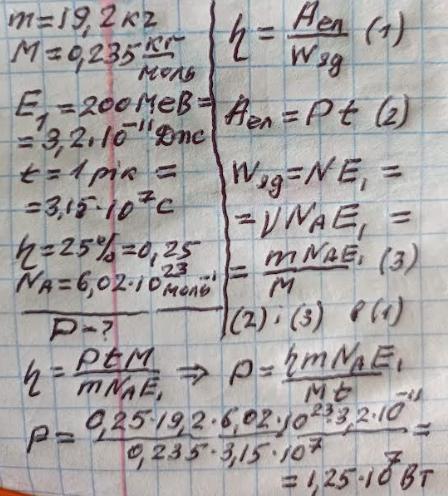Предмет: Физика,
автор: bigetsdens
На атомній електростанцiï за рiк витрачається = 19,2 кг урану U . Враховуючи , що при кожному акті розпаду ядра U вивільняється енергія Е = 200 MeB і коефіцієнт корисної дії при виробленні електроенергії дорівнює n-25 % , знайти електричну потужність атомної електростанції .
Приложения:

Ответы
Автор ответа:
0
Відповідь: 12,5 МВт
Пояснення:
Приложения:

Похожие вопросы
Предмет: Русский язык,
автор: Диана8909
Предмет: Английский язык,
автор: БешеныйБобёр
Предмет: Английский язык,
автор: Аноним
Предмет: Математика,
автор: vinivitin1998